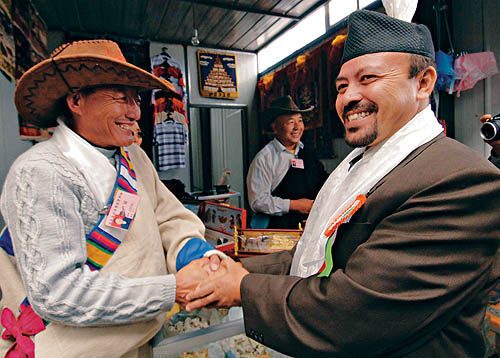|

The successful trial run of the Qinghai-Tibet Railway on July 1, 2006 and the resumed opening of the trade passage at the Nathu La Pass at the boundary of China and India on July 6 combined to accelerate the increase of foreign trade. Total import and export value hit US$123 million, a rise of 59.88 percent over the previous year and 36.1 percentage points higher than the national trade increase. This included US$106 million in imports, an increase of 164.89 percent; and US$222 million of exports, an increase of 34.41 percent. Tibet exported US$211.52 million worth of products to the rest of Asia, an increase of 35.4 percent over 2005; US$6.36 million worth of products to Europe, a rise of 52.5 percent; US$2.76 million worth of products to North America, up 11.6 percent; and US$430,000 worth of products to Oceania, down 69.1 percent. The number of countries trading with Tibet reached 42 in 2006, or 15 less than 2005. Excavators are the major import items, with the import volume hitting US$89 million, or 59.33 percent of total imports Tibet made, an increase of 239.11 percent from the previous period. Border trade reached US$176.18 million, or 53.6 percent of total trade value, an increase of 44.2 percent. This included US$171.58 million of exports, an increase of 48.2 percent, and US$4.6 million of imports, a fall of 28 percent.
With the optimization of Tibet's economic structure and the constant development of the characteristic economy, the export of self-made products in Tibet also enlarged. Statistics showed that, in 2006 the export value of the self-made products in Tibet reached US$43.0159 million, up just over 70.09 percent. The export volume of aweto increased 112.09 percent; that of carpets 1,772.67 percent; that of garlic 149.92 percent; that of tricholoma matsutake 3085.45 percent and that of plaster 56.13 percent.
In 2007, Tibet approved 17 directly foreign-funded projects. The direct foreign investment used on agreement reached US$38.08 million and the factual foreign investment was US$ 15.22 million. |
